This essay was originally published in The Public Domain Review under a Creative Commons License. Please see their rules for reuse.
With his Vera Historia, the 2nd century satirist Lucian of Samosata wrote the first detailed account of a trip to the moon in the Western tradition and, some argue, also one of the earliest science fiction narratives. Aaron Parrett explores how Lucian used this lunar vantage point to take a satirical look back at the philosophers of Earth and their ideas of “truth”.

The Greek-speaking rhetorician and writer Lucian of Samosata, born around 125 CE in what is now known as Syria, has had a somewhat mixed reception through the ages. Scholars agree that his contemporaries and successors viewed him with a great deal of respect. Early Christians were less admiring of Lucian and his pagan and vitriolic pen, though by the time of the renaissance, he had regained favor among learned people. Italian humanists translated him from Greek, and thus Lucian went on to influence the post-renaissance modern world.
While scholars divide themselves over whether Lucian’s greatest contribution lies in his preservation of classical rhetoric or his innovative force as a satirist, in either case what continues to interest casual readers and scholars alike is his profound sense of humor in investigating what are serious philosophical subjects: the moral life, epistemology, and politics. It is perhaps epistemology which can be seen as Lucian’s main focus of satire in what has become his best known work, Vera Historia (in English, True Story), a detailed and elaborate fantasy about travelling to the moon.
The Vera Historia is not only the first detailed narrative about traveling through space to the moon in the Western tradition, it is also, arguably, the strangest. On Lucian’s lunar surface we encounter a dizzying litany of bizarre beasts: three headed vultures, grass-bodied birds with wings of giant leaves, elephant-sized fleas, half women half grapevine beings from whom a kiss would send one “reeling drunk”, and men who sweat milk of such quality “that cheese can actually be made from it by dripping in a little of the honey” which runs from their noses. He also gives particular attention to innovative new methods of reproduction, a necessity in a land devoid of women. On one part of the moon babies are born from men’s swollen calves, delivered dead but brought to life “by putting it in the wind with its mouth open”. A people known as the Arboreals have a different method: a man’s right genital gland is cut off, planted, and from it “grows a very large tree of flesh, resembling the emblem of Priapus”, and from its fruit of huge acorns men are ‘shelled’.
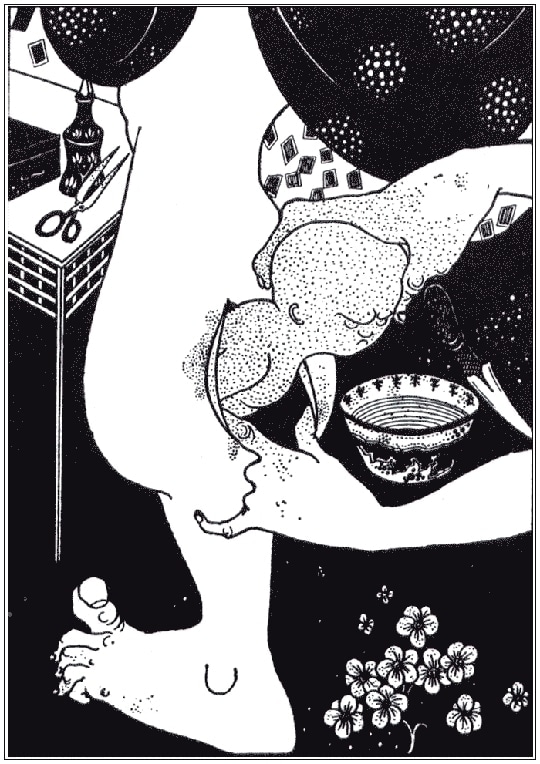
For readers in the 2nd century a trip to the moon would have been fantastical enough, but with these strange array of creatures and outlandish adventures thrown in, the story is clearly anything but “true”. Lucian’s naming of his tale is immediately provoking. He was familiar with the paradox of Epimenides, the man from Crete who announced as gospel truth that “All Cretans are liars” — if he is telling the truth he is lying, but if he is lying then he is telling the truth. Similarly, when Lucian calls his fantastic tale (which makes fun of liars) a “true story,” he references one of the key paradoxes of philosophy and its inability to be completely self-grounding.
In the prologue, he explores the problem of narratorial authority — a key problem for literary criticism in the twentieth century. With an obvious reference to Epimenides, Lucian proclaims: “But my lying is far more honest than [the philosophers’], for though I tell the truth in nothing else, I shall at least be truthful in saying that I am a liar.” Critics have observed that within the first few lines, the persona of the “author” himself is immediately called into question: from the perspective of the author Lucian, what follows is fiction; for the narrator, however, everything is “true.” Since the play of his text unfolds against the backdrop of a paradox, Lucian prevents the reader from gaining even a foothold of privileged perspective from which to objectively judge the truth value of the narrative. More subtly, his statement evokes Homer’s epics and Herodotus’s histories, as well as the dialogues of Plato. He also anticipates the folly of Rousseau’s impossible oath to honesty at the outset of his Confessions centuries later; indeed the Epimenidean paradox applies to almost any work of fiction that purports to tell ‘truth.’
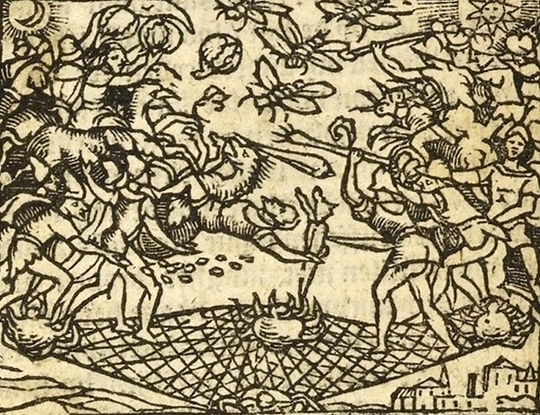
The Vera Historia satirizes the philosophical schools deluded by their own uncritical arrogance when it comes to making and evaluating truth claims. In the way that Lucian exposes the manner literary critical terms dissolve into one another, his satire has much in common with a postmodern outlook because fiction tells a ‘truth,’ but it announces itself as ‘made up’; conversely, ‘history’ announces itself as ‘truth,’ but also tends to be ‘made up.’ Likewise, the authority of the author is challenged, as is the reliability of any narrator — both of which are issues dear to Nietzsche and his French progeny in the late nineteenth and twentieth centuries.
Lucian makes the problem even more urgent by inserting into his fictive narrative assertions that do not conflict with known reality. Including known facts and plausible interpretations of physical phenomena go a long way toward establishing the sort of verisimilitude that gives any fiction its compelling power, but it also forces the reader to recognize that the line between truth and fiction is a blurry one at best. Lucian’s referral to Venus, or “the morning star,” for example, as the site of a battle between the moon and the sun acknowledges contemporary Greek scientific knowledge regarding the occultation of Venus by the moon, and the transits of Venus across the sun. But at the same time, the battle is fictive insofar as it is merely an allegory of human affairs. Critics have noted that Lucian’s use of verisimilitude bolsters the satire precisely because of the way in which credibility adds force to any argument.
The most probable source of some of the more verisimilar aspects of Lucian’s work is Plutarch’s On the Face Appearing in the Orb of the Moon. In this work, Plutarch includes a tale much like the myth of Er from Plato’s Republic, although the work itself is really a compendium of all the speculative knowledge about the moon current in Plutarch’s (and Lucian’s) time. Plutarch’s book is important to a reading of Lucian for two reasons: on the one hand, it offers a view of the moon as “earth-like” in many respects, thus lending credibility to Lucian’s descriptions in the Vera Historia of the moon as an inhabited world, and, on the other hand, it couples “science” with “fiction,” when Lucian repeats the mythical lunar story.
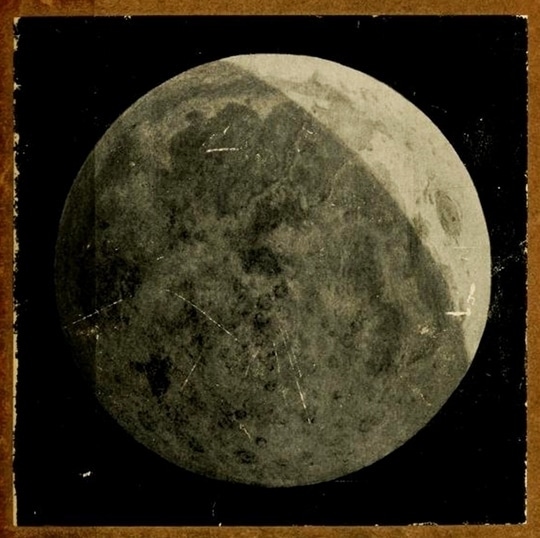
Lucian also uses his satire to ridicule pseudo-science and superstition, especially when he writes, “Everything in my story is a more or less comical parody of one or another of the poets, historians and philosophers of old, who have written much that smacks of miracles and fables.” (250-251)1 It’s worth reiterating that even though poets like Homer and historians like Herodotus suffer under Lucian’s satirical lash, the real culprits are the philosophers, and he intends to give them a proper whipping. He takes great offense at the epistemological hypocrisy of those who would elevate themselves as arbiters of truth and falsity, while at the same time resorting to ‘lies’ and ‘fictions’ (for example, Plato’s Allegory of the Cave), to make their case. As Lucian puts it: “On reading all these authors I did not find fault with them for their lying, as I saw that this was already a common practice even among men who profess philosophy.” (251)2
Finally, the exasperating manner in which Lucian finishes his ‘true story’ also satirizes the lofty claims of philosophers insofar as they are what Nietzsche called “systematizers,” since Lucian promises something he cannot, nor has any intention of, delivering — completeness or closure. Lucian teases the reader with the final line of the second book: “What happened in that other world I shall tell you in the succeeding books” (357). The translator’s footnote to this line more or less summarizes its importance relative to the title of the work: “The biggest lie of all, as a disgruntled Greek scribe remarks in the margin!” (357). Assuming that the conventional wisdom of Lucian scholars is correct and that he never intended to “finish” the Vera Historia, one is struck by the fact that once again the issues of truth and untruth (and by extension, authorial intent and authority) are at stake.
A later work of Lucian’s entitled Icaromenippus also involves a trip to the moon, although in contrast to the Vera Historia, the tale is a more straightforward satire. In fact, this work sets the bar for a whole species of satire that bears the eponymous descriptor “Menippean Satire.” As in the Vera Historia, philosophers bear the brunt of Lucian’s satirical wit, and the dialogue actually reaches its zenith when Zeus vows to Menippus that he will do the lot of philosophers in with thunderbolts. The central issue once again concerns epistemology — what is the value of “knowledge” that is for sale as it is by the sophists? In this sense, Lucian is perhaps closer to Plato than he would like to admit. Lucian’s challenge to Plato and other Hellenic philosophers is the logician’s tu quoque — what you criticize in the sophists you do yourselves. Nevertheless, the trip to the moon again affords Lucian’s hero to gain a supramundane perspective on an earthly, human problem.
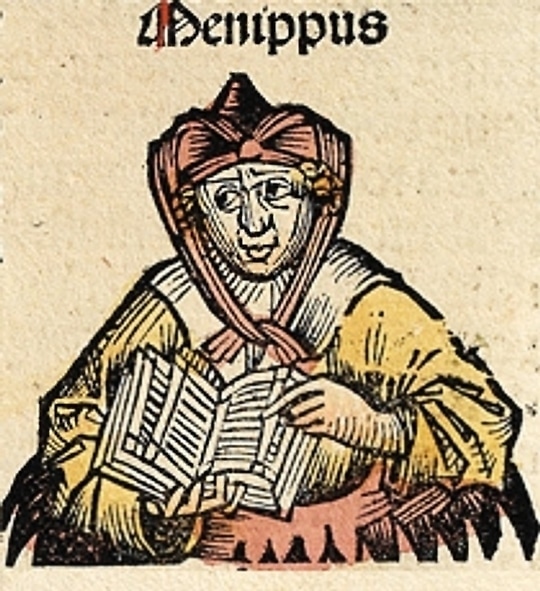
The dialogue begins with a presentation of Menippus as world-weary and yearning for another world. He invokes the example of philosophy, as he remarks, “Being in that state of mind, I thought it best to learn about these points from the philosophers, for I supposed they surely would be able to tell the whole truth.” (274-275) But in keeping with the satirical mode, the ‘philosophers’ he ‘employs’ are simply sophists — rhetoricians willing to speak on any subject whatever so long as payment for services is involved. The ‘knowledge’ they pass off is nothing more than fiction: “they presume to say just how many cubits it is in distance from the sun to the moon … without knowing how many furlongs it is from Megara to Athens” (279). Like Plato, Lucian calls into question the validity of “selling” knowledge, but he also wants to include Plato (and philosophy in general) within the scope of his larger critique, which is that philosophy does no better than sophistry — it just doesn’t get paid! In other words, a theory paid for is no worse than one got for free. The lack of consensus among philosophers reveals the paucity of its claims about knowledge and its presumptions toward truth. As an example, Menippus points out a logical absurdity in their reasoning that Bertrand Russell will level against Christianity nearly 1800 years later: “[the philosophers] made some god or other the creator of the universe, but did not tell us where he came from or where he stood when he created it all” (281).
In the Icaromenippus, what captures the attention of Menippus are the petty foibles of humanity: the hidden motives and the secret hypocrisies indiscernible on earth that the lunar vantage point is able to reveal. Moreover, kings are as bad as common men — no class of person is particularly ethical. Through the history of western literature, many writers will use the device of traveling to the moon or another planet in order to gain a perspective from which to look back at earth and satirize its proudest inhabitants: humanity. Lucian is merely the first to do it.
In his Menippus dialogue, Lucian seems sure that knowledge itself is a function of perspective, and that the base fact of being earthbound ensures that we cannot have an unbiased and objective view of any ‘truth.’ From the moon, he sees the world as a small and fragile object, upon whose surface wars and empires appear absurd: “And when I looked to the Peloponnese and caught sight of Cynuria, I noted what a tiny region, no bigger any way than an Egyptian bean, had caused so many Argives and Spartans to fall in a single day.” (298-299) 1800 years before humans even ventured into space, Lucian articulated a sentiment that almost every astronaut fortunate enough actually to have traveled into space and looked back at the earth has also voiced: a profound and nearly religious sense of the fragility of our planet, our “pale blue dot,” as Carl Sagan called it, and the stupidity of conflicts between countries separated by arbitrary lines drawn on maps. As Menippus puts it, “I was especially inclined to laugh at the people who quarreled about boundary-lines, and at those who plumed themselves on working the plain of Sicyon or possessing the district of Oenoe in Marathon or owning a thousand acres in Archarnae.” (298-299).
In order to succeed, satire must offer some moral lesson, some didactic purpose. The revelation of Lucian’s trips to the moon seems rather simple: we ought not take ourselves too seriously, especially when it comes to philosophy.
Dr. Aaron Parrett is a writer and professor at the University Of Great Falls in Montana. He has published widely in various fields, including History, Science Fiction, Philosophy, and Literature. He is the author of The Translunar Narrative in the Western Tradition (Ashgate 2004).
_
_
True History (1894) by Lucian of Samasota, translated by Francis Hickes, illustrated by J.B.Clark and Audrey Beardsley with an introduction by Charles Whitby.
Trips to the Moon (ca. 1780) a compilation including True History and Icaro-Menippus translated by Thomas Francklin.
Plutarch on the face which appears on the orb of the Moon (1911) by Plutarch, translated by A.O. Pickard
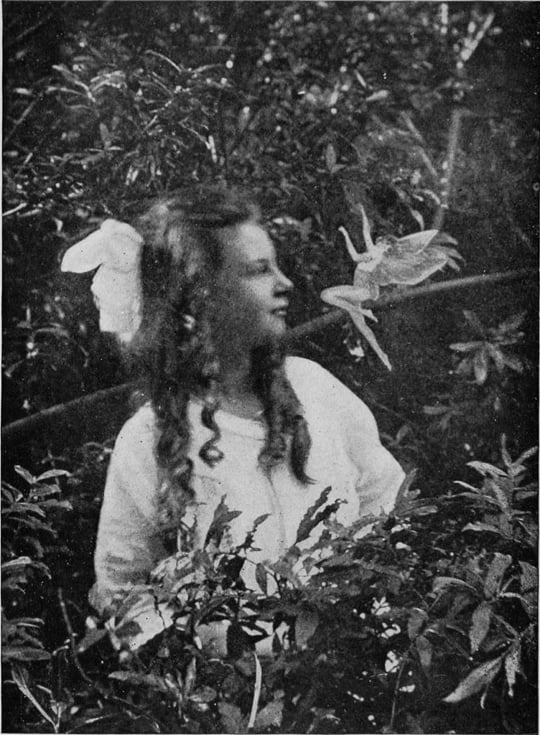 Sir Arthur and the Fairies
Robert Baden-Powell’s Entomological Intrigues
In 1915 Robert Baden-Powell, founder of the worldwide Scouts movement, published his DIY guide to espionage, My Adventures as a Spy. Mark Kaufman explores how the book’s ideas to utilise such natural objects as butterflies, moths and leaves, worked to mythologize British resourcefulness and promote a certain ‘weaponization of the pastoral’.
Sir Arthur and the Fairies
Robert Baden-Powell’s Entomological Intrigues
In 1915 Robert Baden-Powell, founder of the worldwide Scouts movement, published his DIY guide to espionage, My Adventures as a Spy. Mark Kaufman explores how the book’s ideas to utilise such natural objects as butterflies, moths and leaves, worked to mythologize British resourcefulness and promote a certain ‘weaponization of the pastoral’.